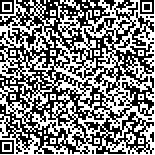下载中心
优秀审稿专家
优秀论文
相关链接
摘要

热辐射方向性是影响地表温度反演精度的关键因素之一。为深入了解森林地表的热辐射方向性特征,探索林下地表的热辐射方向性规律,在夏秋两季分别用FLIR i7和T420热像仪对东北天然林下草本植被与部分裸露土壤的亮度温度进行了多角度观测和分析,采用线性近似方法对获取的方向亮温进行纠正。结果表明:(1)林下地表具有较为明显的热辐射方向性,并与地表结构有关;(2)夏季地表由植被和小部分裸露土壤组成,冠层密度大,不同天顶角观测的亮温差异较小,平均为1-1.5℃,10:30 am观测亮温最高值在东方向天顶角40°位置(太阳天顶角30.5°±0.5°,方位角149°±1°),而14:30 pm在西方向天顶角40°左右(太阳天顶角为43.5°±1.5°,方位角247.5°±1.5°);(3)秋季地表大部分为10 cm厚的枯落物,不同天顶角观测差异较夏季大1℃左右,最高亮温则均位于天顶角50°,10:30 am位于东方向(太阳天顶角为57.5°±0.5°,方位角169°±2°),14:30 pm位于西方向(太阳天顶角为73°±1°,方位角231°±1°)。(4)林龄对于林下地表的热辐射方向性有一定影响,但季节性影响更显著。因此,林下地表的热辐射方向性对遥感像元尺度亮度温度的方向性有贡献,在以后的研究中应该予以考虑。
Thermal radiation directionality is a key factor that affects the accurate retrieval of land surface temperature from remote sensing images. To understand the characteristics and law of thermal radiation directionality of a natural forest background, multi angular observations of directional brightness temperatures (DBT) were conducted in both summer and autumn on herbaceous vegetation and partially bare soil in a natural forest in northeast China.
A FLIR T420 thermal imager was used to capture DBTon the east-west and north-south planes at 10:30 AM and 14:30 PM of each day. The View Zenith Angle (VZA) changed from –50° to 50°. Then, time effects on DBT were removed with a linear correction method during observations using continuous thermal images that were taken by FLIR i7 in the nadir direction.
(1) The brightness temperature of then atural forest background had a visible directional affect, which is related to the ground vegetation structure and cannot be omitted. (2) In the summer, the forest background was mostly covered by herbaceous vegetation and shaded by dense tree crowns, which account for the small variations in small DBT (1-1.5℃). The highest DBT was observed at VZA of 40° in the east for 10:30 AM (solar zenith angle (SZA), 30.5±0.5°;solar azimuthal angle (SAA), 149±1°) and in the west for 14:30 PM (SZA, 43.5±1.5°; SAA, 247.5±1.5°). (3) In autumn, the forest background was covered by a 10-cm thick litter layer. DBT is 1℃ higher than those in the summer. The maximum DBT appeared at VZA of 50° in the east for 10:30 AM (SZA, 57.5±0.5°; SAA, 169±2°) and in the west for 14:30 PM (SZA, 73±1°; SAA, 231±1°). (4) Although forest age influenced DBT, the seasonal effects were more significant.
The directional effects of the brightness temperature of the forest background may contribute to pixel-scale DBT, which should not be neglected in future studies.

